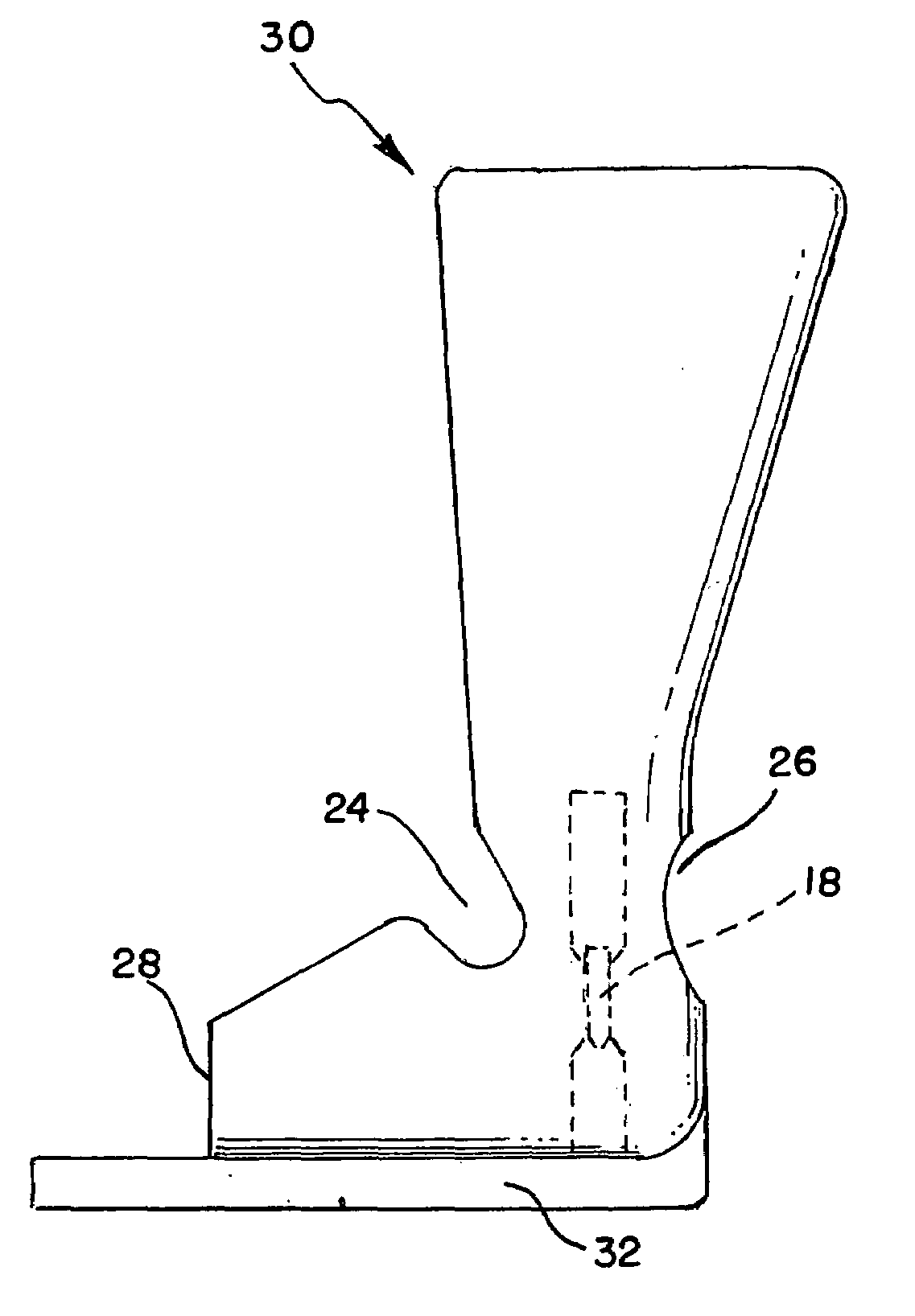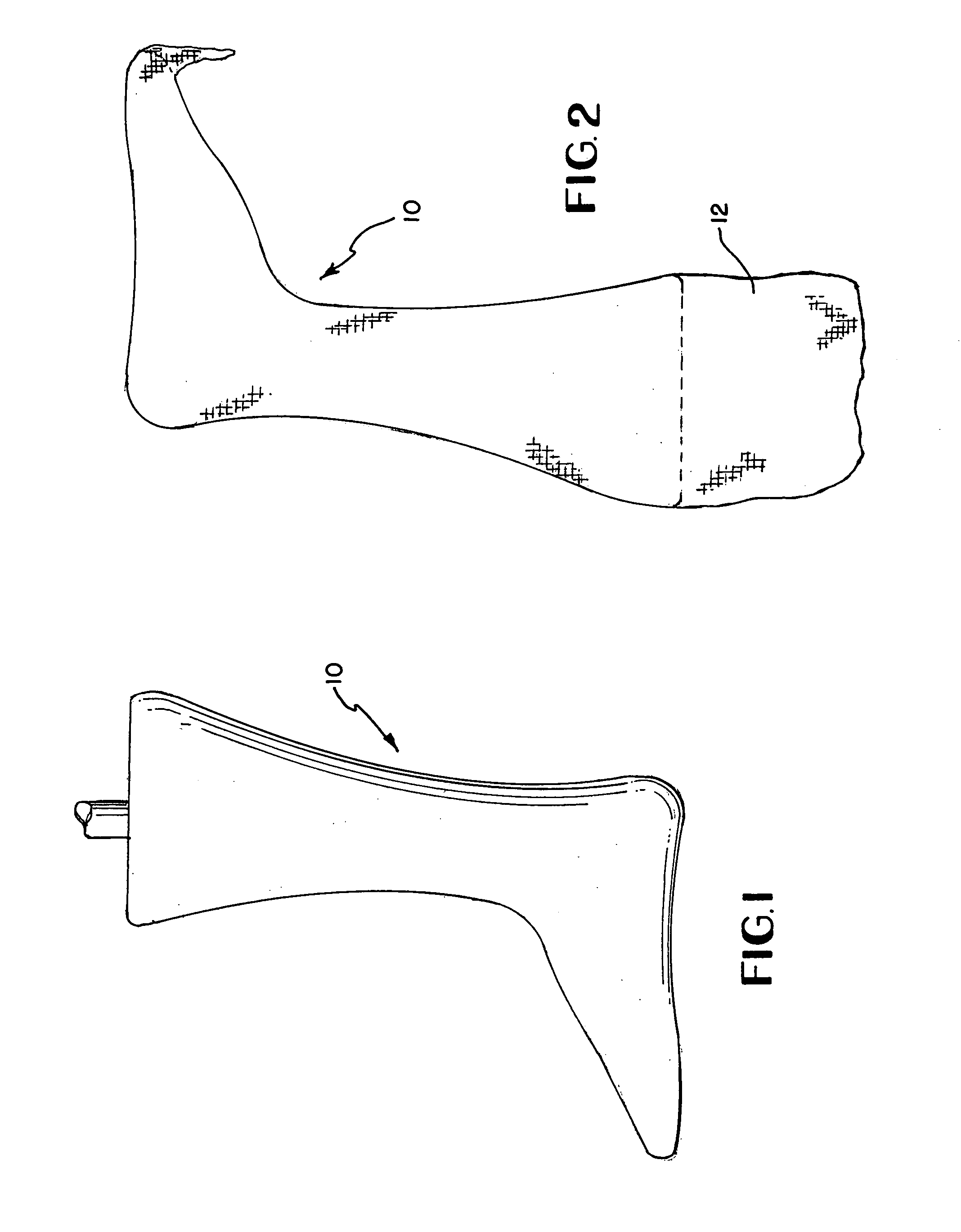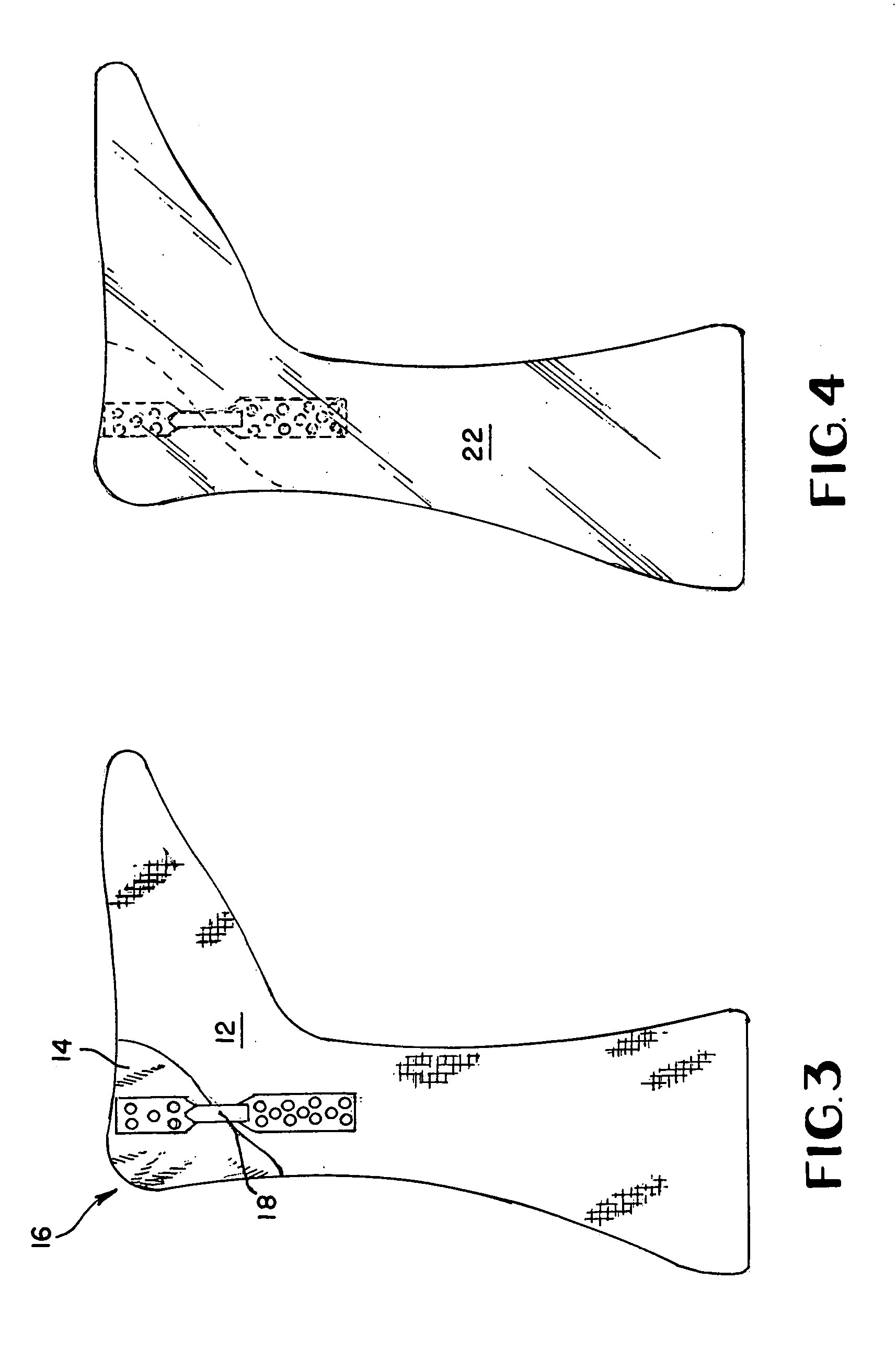Dynamic response ankle-foot orthosis with joint
- Summary
- Abstract
- Description
- Claims
- Application Information
AI Technical Summary
Benefits of technology
Problems solved by technology
Method used
Image
Examples
Embodiment Construction
of Related Art
[0005]Ankle foot orthoses are commonly used as foot, ankle, and leg braces for improving movement. Years ago a leg brace would consist of two metal bars and a stirrup attached to the sole of the shoe. A horizontally positioned padded, metal band, contoured to the back of the leg calf, would connect the two metal bars. A broad strap across the anterior section of the calf would hold the brace in place. This type of brace has limited use today, but is not considered to be state of the art orthotic management. This type of device lacks biomechanical control of the foot and ankle and is cumbersome and heavy. It would be very difficult to adapt this brace to athletic applications since the metal bars would pose a hazard for the user, and possibly to other participants in the sport.
[0006]A modern ankle foot orthosis, being a device that applies biomechanical forces to a body segment, is usually fabricated from thermoplastics. The thermoplastic is heat molded over a positive ...
PUM
 Login to View More
Login to View More Abstract
Description
Claims
Application Information
 Login to View More
Login to View More - R&D
- Intellectual Property
- Life Sciences
- Materials
- Tech Scout
- Unparalleled Data Quality
- Higher Quality Content
- 60% Fewer Hallucinations
Browse by: Latest US Patents, China's latest patents, Technical Efficacy Thesaurus, Application Domain, Technology Topic, Popular Technical Reports.
© 2025 PatSnap. All rights reserved.Legal|Privacy policy|Modern Slavery Act Transparency Statement|Sitemap|About US| Contact US: help@patsnap.com



